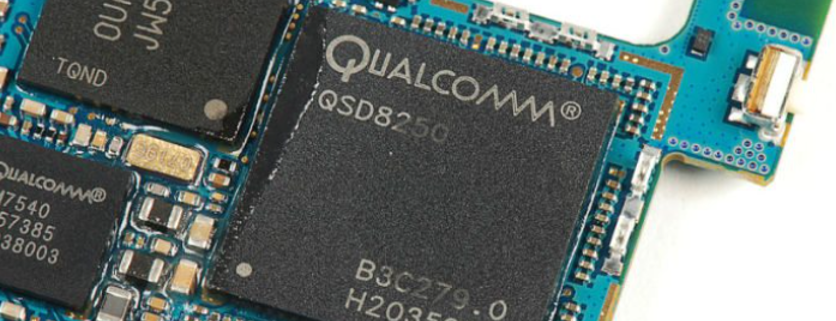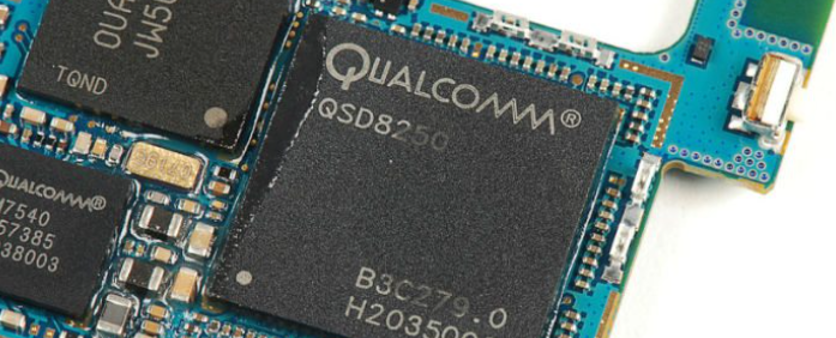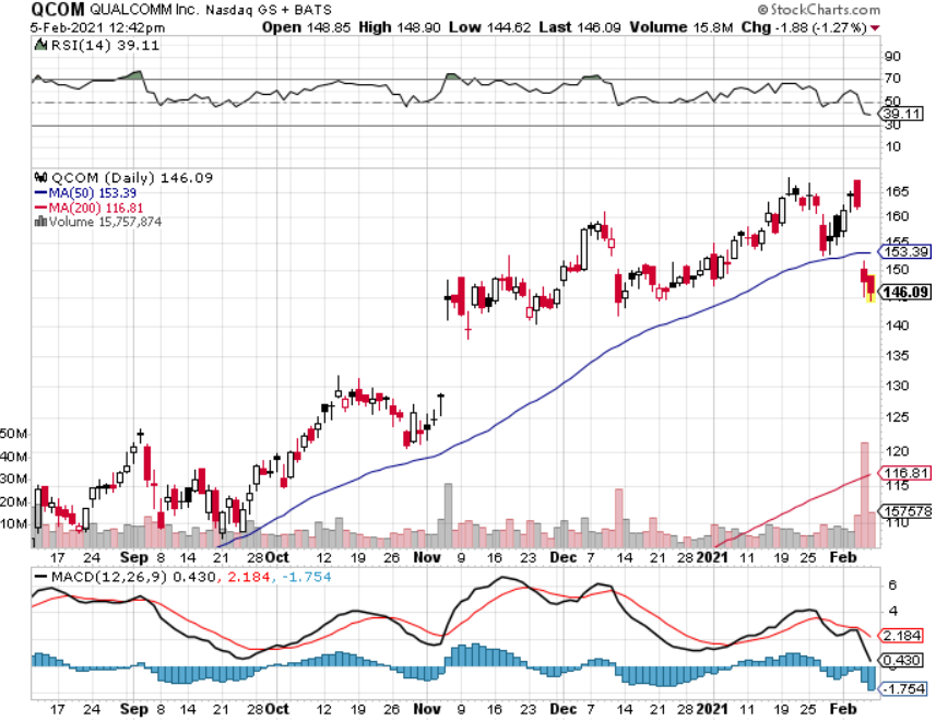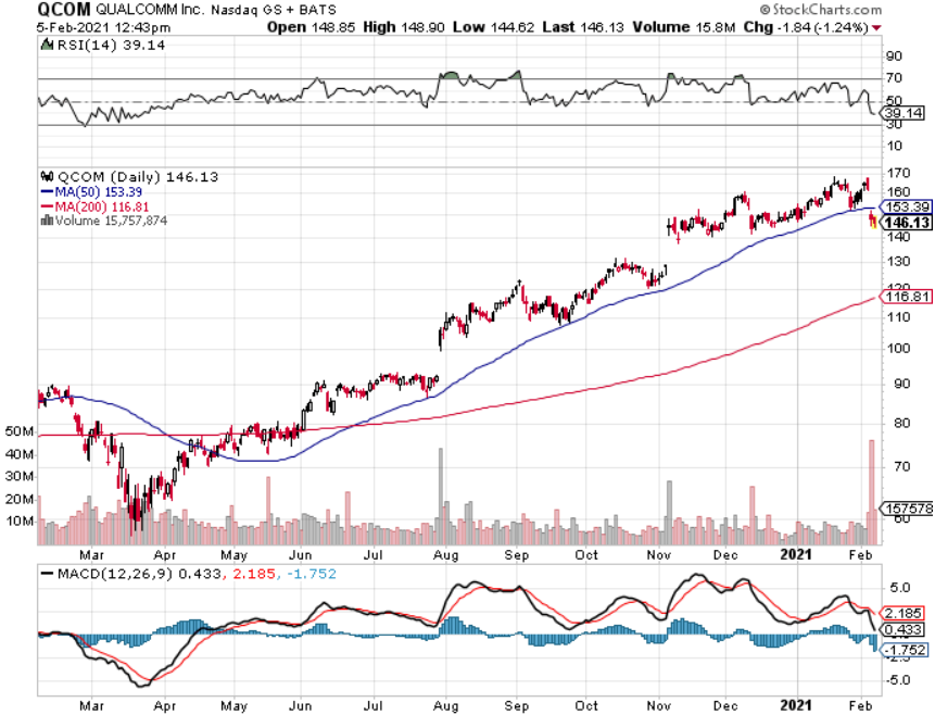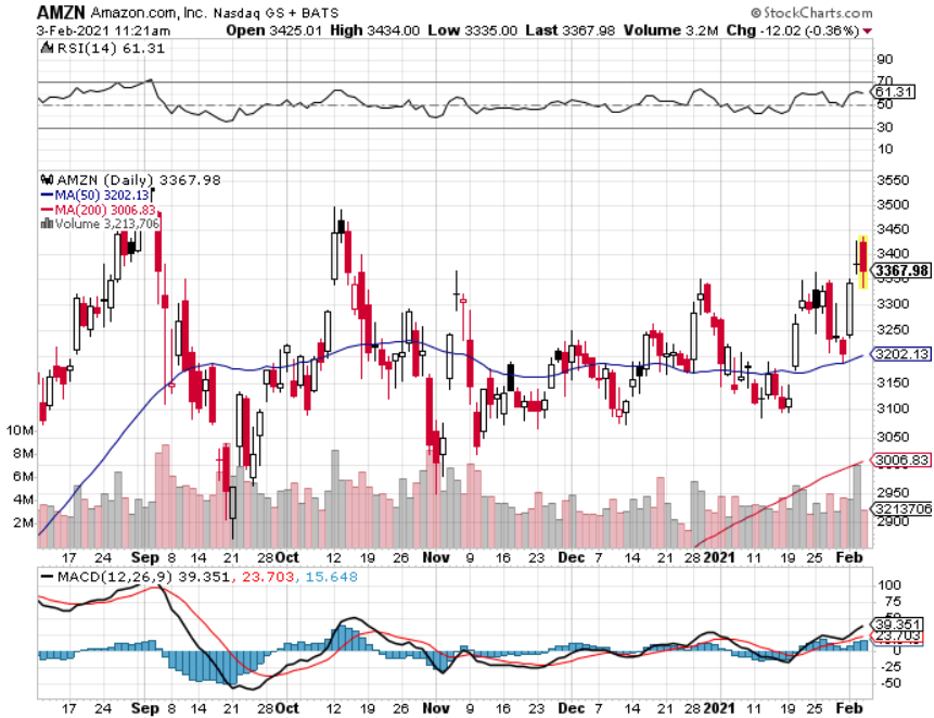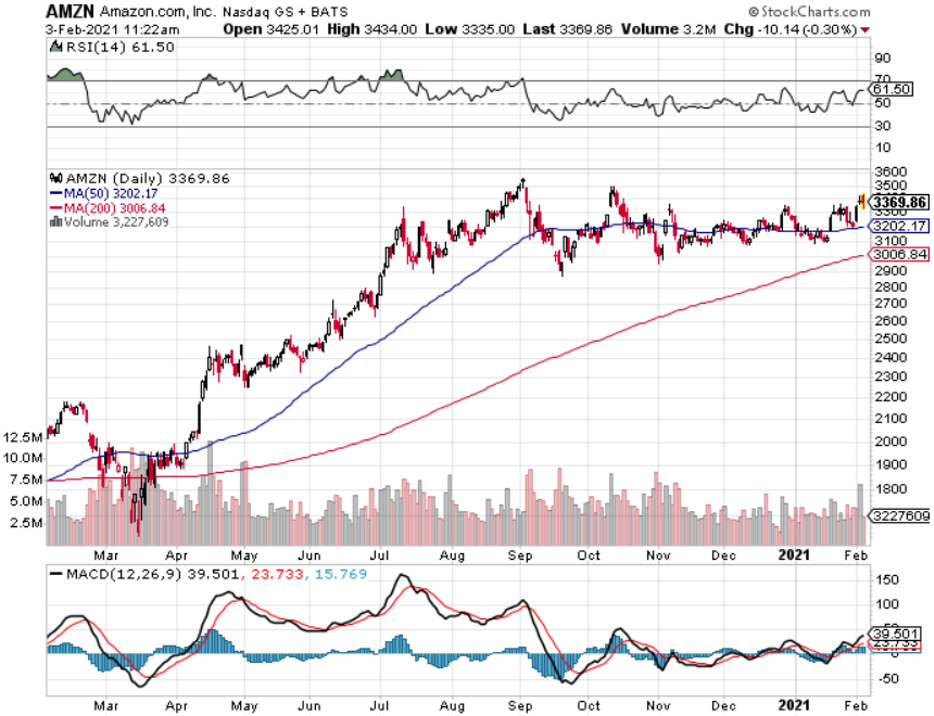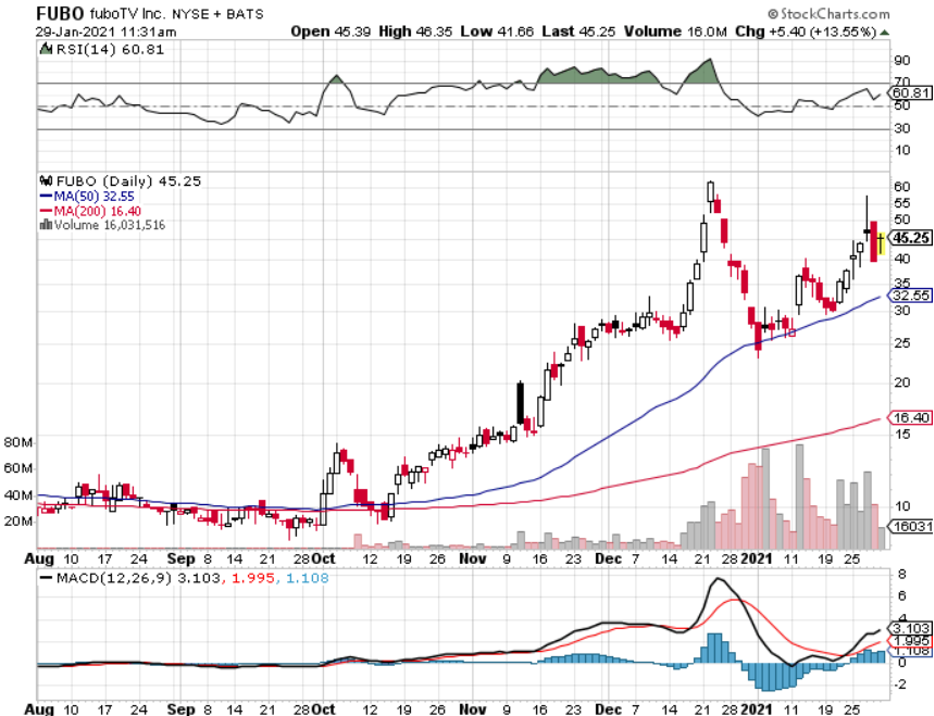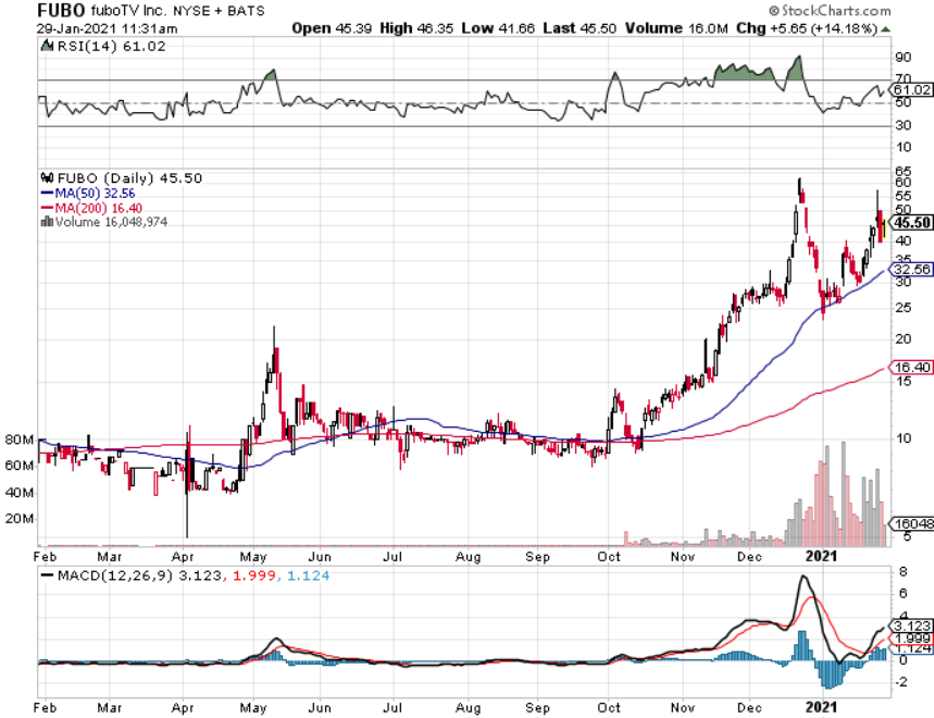What’s the one-sentence answer to why you should buy chip company QUALCOMM Incorporated (QCOM)?
The simultaneous global adoption of 5G, combined with increasingly complex technical requirements and an accelerating pace of change drives a significant multiyear industry transition that directly offers QCOM more revenue opportunities.
The numbers are showing up big time with record first-quarter revenues of $8.2 billion, up 63% year over year, and record earnings of $2.17 per share, more than doubling from the prior year.
In fact, Qualcomm is being held back by supply constraints - business is that good.
RF or better known as mobile antennas, demonstrated continued growth with quarterly revenues more than doubling year over year and crossing the $1 billion threshold, a significant milestone.
QCOM is executing a masterful digital strategy to address many of the technical challenges of delivering a true modem to antenna 5G experience and capture a higher dollar share of content in smartphones.
The automotive revenues of $212 million were up 44% year over year, and QCOM’s design win pipeline has grown to $8.3 billion from just $3 billion three years ago, placing QCOM on a trajectory to achieve its fiscal-year 2024 revenue target of $1.5 billion.
Internet of Things (IoT) vertical also passed the $1 billion threshold in Q1 and grew 48% year over year, driven by the growth of QCOM’s core technologies for the digitization of consumer, networking, and industrial applications.
The rapid deployment of 5G in both the core handset industry is something that QCOM has planned to take advantage of for years.
In QCOM’s licensing business, their broad portfolio of foundational system-level innovations and intellectual properties across 3G, 4G, and 5G, along with valuable implementation patents is unmatched and recognized in part by having signed more than 120 5G license agreements, up from 111 license agreements last quarter.
Qualcomm has also spent the past decade knee-deep in AI research and development, resulting in the creation of the technology necessary to scale AI across industries and products from smartphones and automotive to the IoT and data centers.
To create a world full of artificial intelligence, QCOM focused on making efficient hardware, algorithmic advancements, and software tools available to developers and original equipment manufacturer (OEM).
The car is somewhere where QCOM can make some serious inroads as the industry continues to grow rapidly.
The undeniable trend is that the car is becoming more connected, more autonomous, and more electric.
A demand for 5G connectivity, and new experiences and user demands such as always-connected digital cabins for infotainment, real-time navigation, and entertainment are becoming the new standard.
This “iPad on wheels” will ultimately be powered by 4G LTE and 5G connected services with integrated cellular V2x, Wifi, Bluetooth, and precise positioning technologies, QCOM’s 4G and 5G platforms are designed to securely connect vehicles to the cloud, each other, and the surrounding environment.
Qualcomm already has 200 million vehicles on the road today connected with QCOM modems, and nobody produces modems better than them.
QCOM currently has a third-generation automotive cockpit solution that has been selected by 20 of the top 25 automakers.
This shows QCOM’s achievements in high-performance computer vision, artificial intelligence, and multi-sensor processing.
IoT products have been a hit with the launch of QCOM’s second-generation Snapdragon HCX, and the introduction of QCOM’s commercial and educational platforms for both Windows and Chrome, and continued ecosystem progress.
With over 40 design wins and strong ecosystem momentum with global operator partnerships, QCOM is flexing the IoT division with the RF division to continue on its path of stand-out revenue drivers for the foreseeable future.
Sadly, investors focused on the supply constraints “across the entire industry” as a reason to dump the stock in the short-term, but I do believe this is a great buy and hold chip stock.
This will be a technical issue and not a long-term structural overhang that could potentially kill the trajectory of the underlying stock.
I am bullish QCOM.

